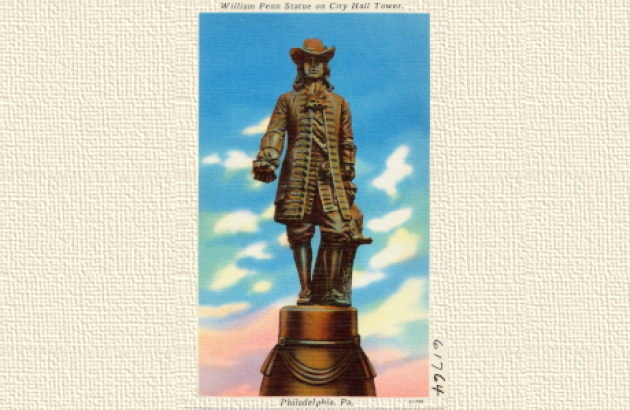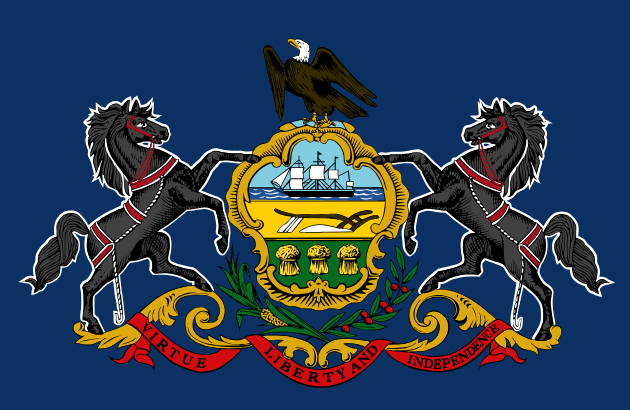Blog
William Penn and Pennsylvania's Founding Documents
William Penn, the founder of Pennsylvania and advocate of religious freedom, was born October 14, 1644*, 375 years ago. It was his influence that set the framework for not only Pennsylvania's Constitution, but also the U.S. Constitution. For researchers interested in exploring this connection, many of Pennsylvania's founding documents are reprinted in the Appendices to the Statutes at Large of Pennsylvania, which is available for free online from the Pennsylvania Legislative Reference Bureau. Let's take a look at some of these documents.
In 1681, King Charles II gave Penn a large parcel of land in the "New World" as payment for money Penn's father, Admiral Sir William Penn, loaned the king. Signed by the king on March 4, 1681, the Charter of the Province of Pennsylvania delineated the boundaries of Pennsylvania and granted Penn and "his heires and assignes" use of all lands and waters found within. The Charter also granted Penn the power to create laws, to establish a court system with appointed judges, and to create towns, boroughs, and cities within Pennsylvania.
In 1682, Penn drew up his first Frame of Government for the colony. As he wrote in the Preface, Penn desired to form a democracy: "Any Government is Free to the People under it ... where the Laws Rule, and the People are a Party to those Laws, and more then this is Tyranny, Oligarchy, or Confusion." This first Frame of Government was an exercise in the development of liberty as it was designed "To support Power in Reverence with the People, And to secure the People from the abuse of Power; that they may be Free by their just Obedience, and the Magistrates Honourable for their just Administration: For Liberty without Obedience is Confusion, and Obedience without Liberty is Slavery."
As a way to begin the development of a democratic form of government, this Frame of Government called for the creation of a Provincial Council, General Assembly, and a Governor. The members of the General Assembly should be chosen by the "Freemen" and have the ability to pass bills into laws. To the Governor and Provincial Council, this Frame gave the authority to develop roads and highways, public schools, and "Standing Courts of Justice".
Pennsylvania had several Frames of Government before the American Revolution, the latest of which, the 1701 Charter of Privileges, remained in effect until the Pennsylvania Constitutional Convention of 1776. The Charter of Privileges granted "Liberties, Franchises and Privileges ... to be held, enjoyed and kept by the freemen, planters & adventurers, & other Inhabitants of" Pennsylvania. These included religious freedom, a General Assembly chosen by the people, criminal defendant's right to counsel, and the precursor to procedural due process (property complaints brought by the government needed to follow a procedural process).
Many of these liberties were incorporated in the 1776 Constitution of Pennsylvania (the Constitution begins on page 585), which was one of the state constitutions used as a model for the United States Constitution. For more about the connection between the Pennsylvania Constitution and the U.S. Constitution, see Robert F. Williams, The State Constitutions of the Founding Decade: Pennsylvania's Radical 1776 Constitution and Its Influences on American Constitutionalism, 62 Temple L.Rev. 541 (1989).
For more information on the development of the Pennsylvania Constitution, take a look at Ken Gormley's The Pennsylvania Constitution: A Treatise on Rights and Liberties. Other resources can be found in our Pennsylvania Constitution research guide.
*Some sources, including The Pennsylvania Manual, list October 24, 1644 as Penn's date of birth.




